| Ecosystem | R P | E P |
|---|---|---|
| Tundra | > 0.7 | < 0.3 |
| Forest | 0.3 – 0.7 | 0.3 – 0.7 |
| Steppe | 0.1 – 0.3 | 0.7 – 0.9 |
| Semi-desert | 0.03 – 0.1 | 0.9 – 0.97 |
| Desert | < 0.03 | > 0.97 |
Ecosystem Water Balance
Learning objectives
- Describe the water balance at a surface-atmosphere interface.
- Explain how the surface water balance is linked to the energy balance.
- Know what are water inputs, outputs and stores within vegetation canopies.
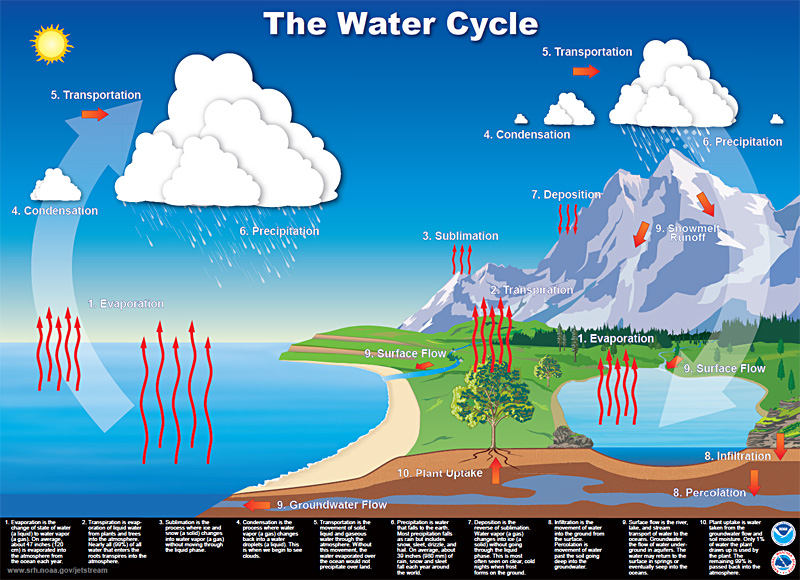
Evapotranspiration
Precipitation
Mass Balance of Drainage Basins
In hydrology, we use mass conservation for water:
- Input
- Precipitation P
- Output
- Evapotranspiration E
- Run off R
- Internal mass change
- Storage change \(\Delta S\)
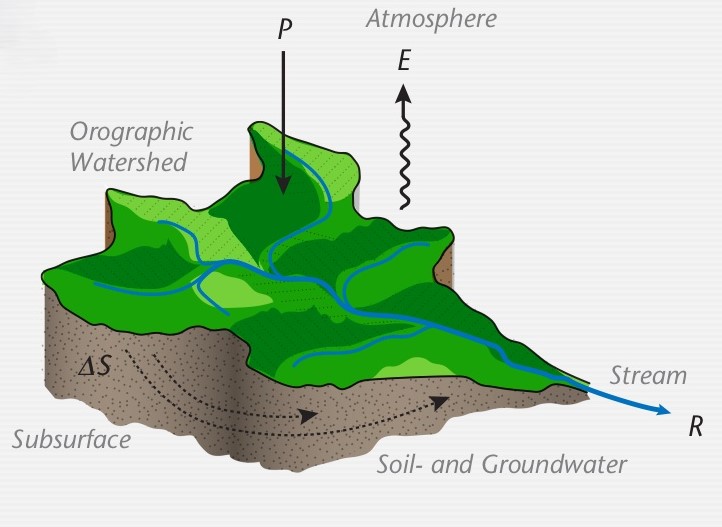
Land-Atmosphere Water Balance
Components can be considered as mass flux densities:
- Volume of water per unit ground area \(\rm{m}^3 \ \rm{m}^{-2} \ \rm{s}^{-1}\)
- Equivalent to depth of water \(\rm{mm} \ \rm{h}^{-1}\)
\[ P = E + I + \Delta R + \Delta S \]
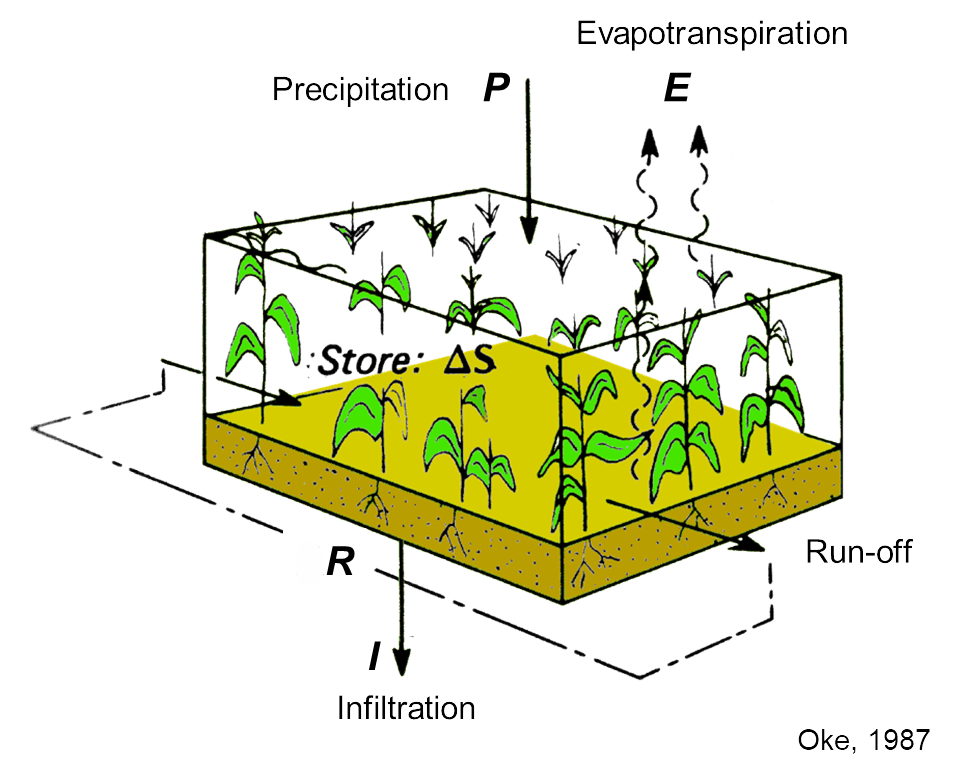
Evapotranspiration
Latent heat flux \(LE\) (in \(\rm{W} \ \rm{m}^{-2}\)) and evapotranspiration \(E\) (in \(\rm{mm} \ \rm{s}^{-1}\)) are linked by the latent heat of vaporization:
\[ LE = L_v E \qquad(1)\]
You might notice then, that we can also define \(E\) as:
\[ E = \overline{w^{\prime}\rho_v^{\prime}} \qquad(2)\]
Water Balance as a Climate Index
- We can use two ratios as climatic indices:
- Run-off ratio (\(\frac{R}{P}\))
- Evaporation ratio (\(\frac{E}{P}\))
- For similar annual precipitation and similar \(R_n\), the annual Bowen ratio (β = H / LE) increases as R/P increases and E/P decreases.
Bowen ratio and climate
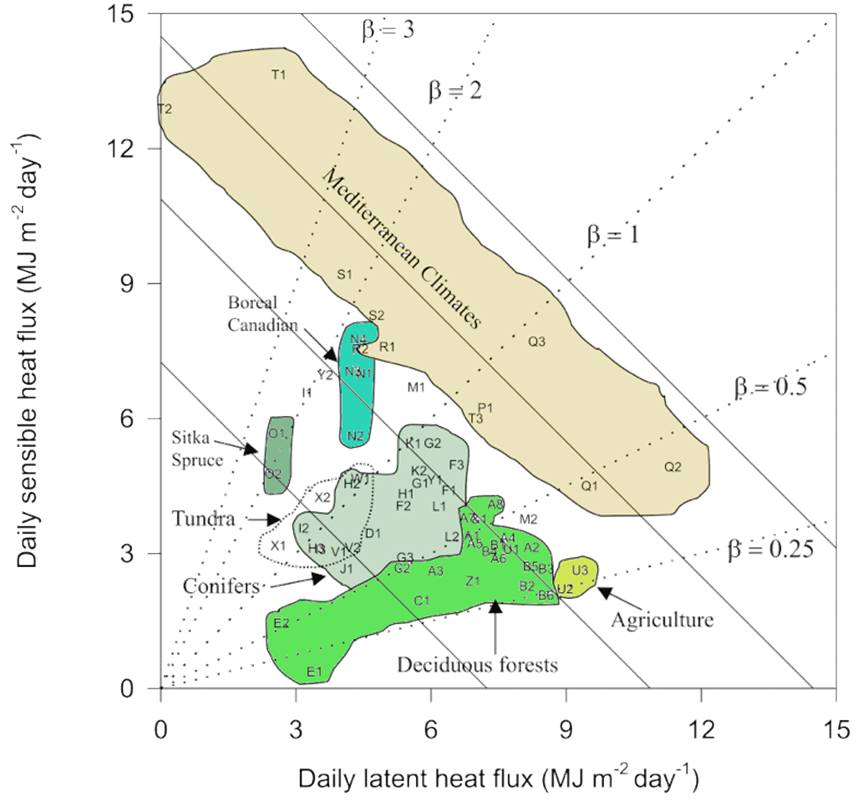
Wilson et al.. (2002). Water Res. Research, 38 (12)
Water balance of plant canopies
- Inside a canopy there are significant air, soil, and plant flows
- Re-distribution of water and temporary water storage (on leaves, in plants, soils, surface)
- The plant structure can cause atmospheric water to condense
- Water vapour is released from plant into atmosphere

Throughfall (\(P_T\))
Precipitation directly falling through the canopy or deflected by the tree crowns reaching the ground.


Canopy Drip
A special case of throughfall:
- Coniferous trees prefer to direct water to the edge of the tree, due to their characteristic shape.
- Causes, \(\theta_W\) is increased in a ring around a tree, while reducing \(\theta_W\) at base of tree

Stem Flow (\(P_S\))
- Process where water is drained along leaves / branches, and directed to the stem
- Increased \(\theta_w\) close to the stem
- Common strategy for plants in drier ecosystems
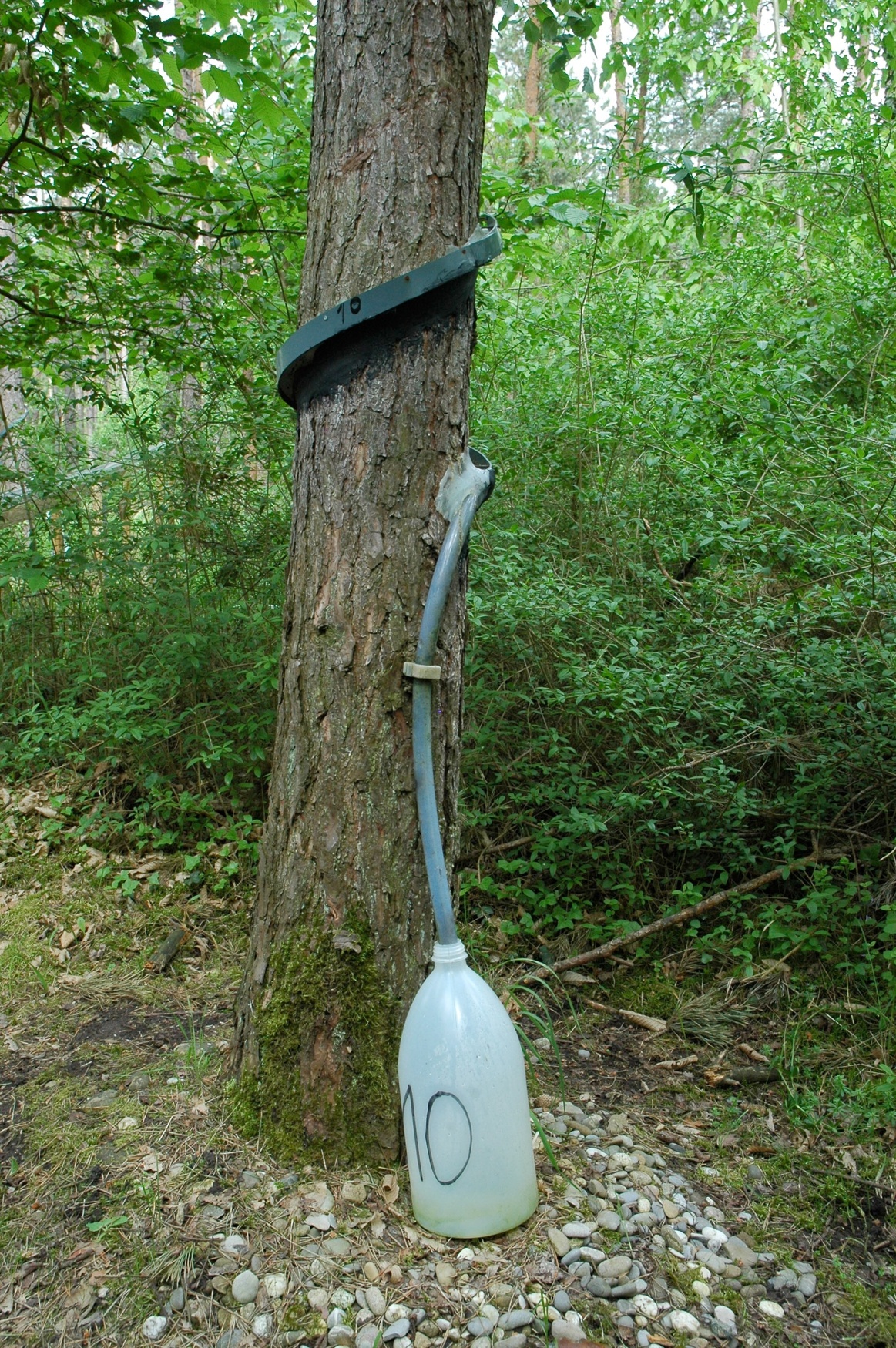
Interception (PI)
Water form a precipitation event that remains on the surface of the plant
- Evaporates or drips down to the ground later
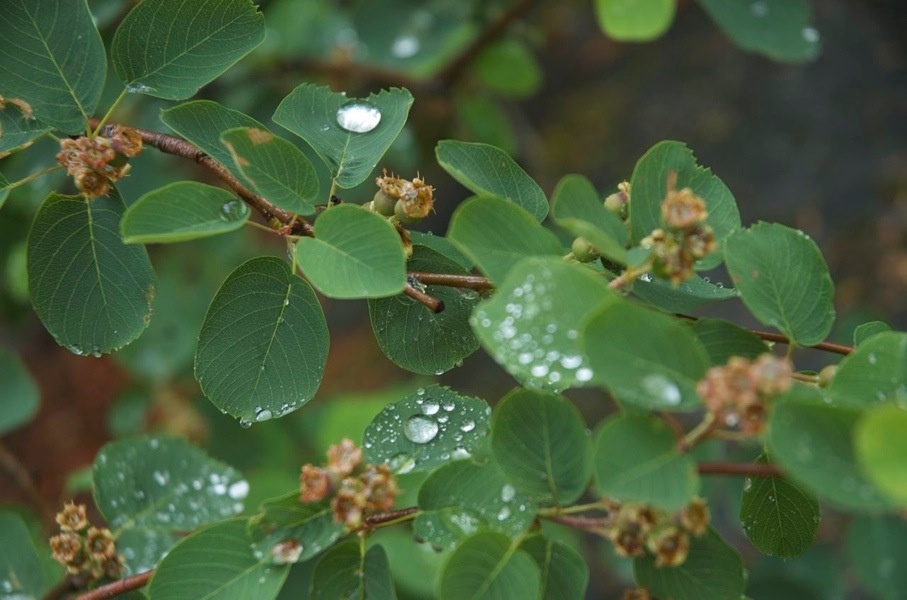
Interception vs. Precipitation
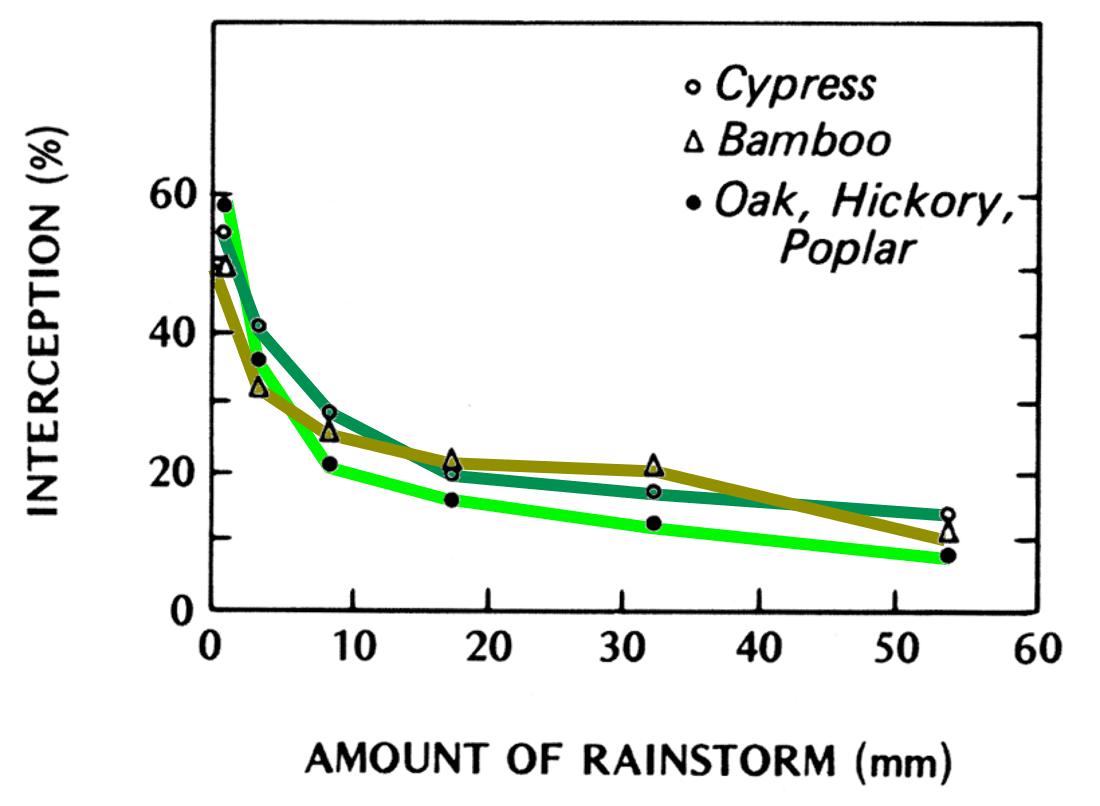
Interception for different trees and intensities of rainfall events Oke, 1987
Partitioning Precipitation
For the partitioning of P in a vegetation canopy: \(P = P_T + P_S + P_I\)
| Forest type | Interception | Stemflow | Throughfall |
|---|---|---|---|
| Tropical rainforest | 13% | 2% | 85% |
| Mediterranean forests | 17% | 2% | 81% |
| Dry scrubland | 17% | 11% | 72% |
| Deciduous forests | 19% | 7% | 74% |
| Coniferous forests | 20% | 3% | 77% |
Take home points
- Water at land-atmosphere interfaces can be balanced the same way we accounted for energy using a flux per unit area (resulting in mm per time).
- Water balance and energy balance are linked through the latent heat flux / Evapotranspiration (by latent heat of vaporization, \(LE = L_v E\)).
- The three-dimensional structure of a plant canopy causes vertical differences in the input, storage and re-distribution of water (throughfall, interception, stem flow, fog drip).